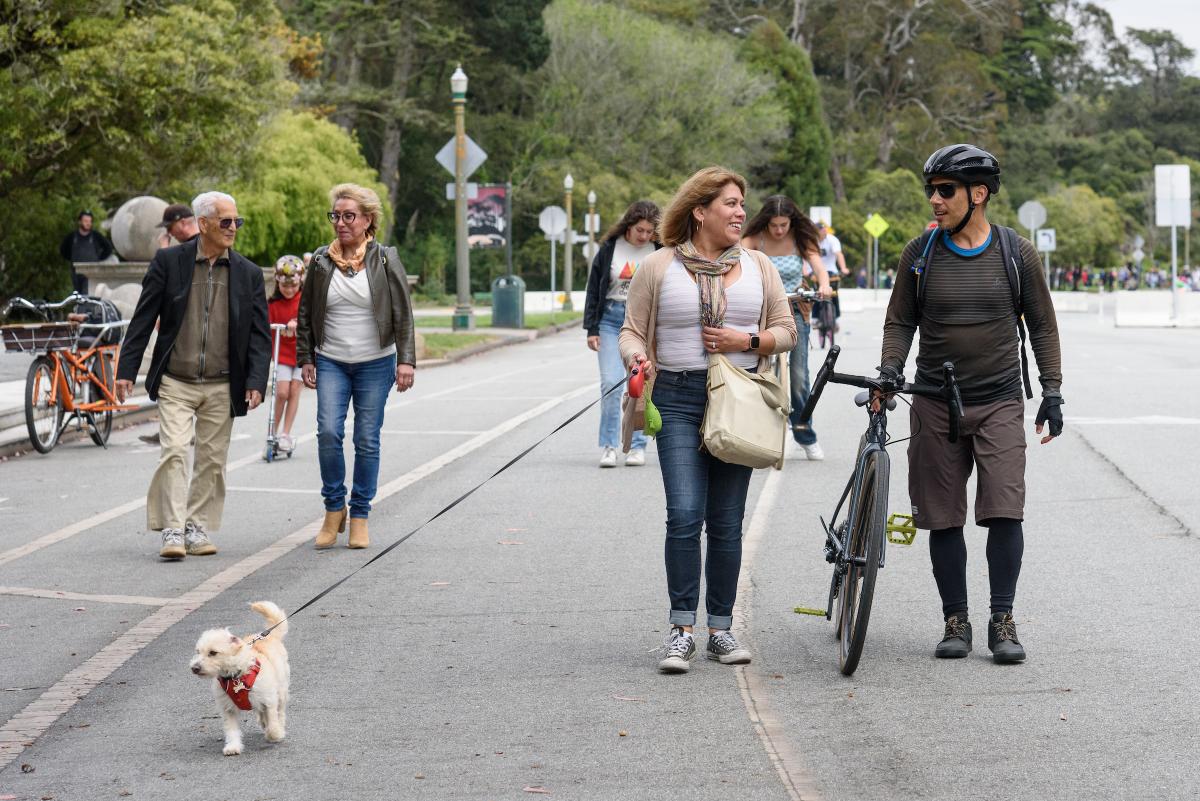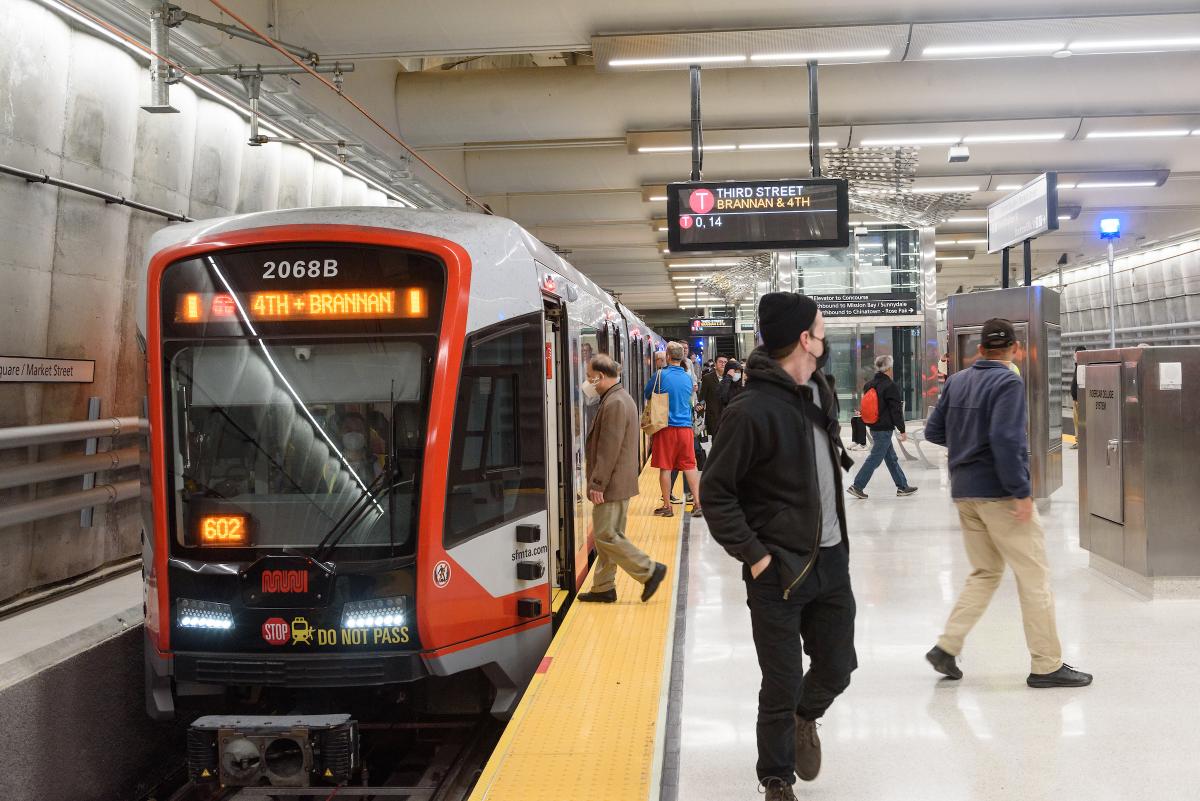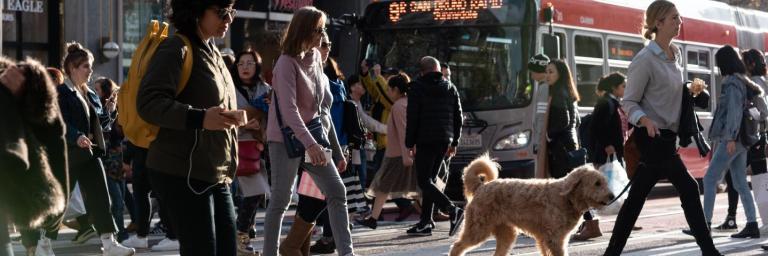In San Francisco, transportation is one of the largest contributors to climate change, which has brought severe weather events such as flooding and wildfires to residents’ doorsteps. Climate change undermines public health and disproportionately impacts communities of color and people with disabilities. Cars and trucks generate nearly half of all greenhouse gas emissions in San Francisco, and reductions in greenhouse gases from transportation have not kept pace with reductions from other sectors or the city’s goals. Given recent data and trends, the city will be decades behind its goals unless it takes urgent action.
The city’s Climate Action Plan provides a framework to meet the city’s goals of net-zero greenhouse gas emissions by 2040, 80% of trips on low-carbon modes by 2030 and 100% of registered light-duty vehicles to be electric by 2040. To align with that plan and urgently advance priority actions, the SFMTA released the Climate Roadmap, which identifies the highest-priority actions it must initiate in the next five to seven years to rapidly reduce emissions and generate important community benefits such as health, equity, accessibility, safety and many others. Implementing the actions will be a step toward realizing the city’s climate goals and the vision established by the Climate Action Plan and amplified in the SFMTA Strategic Plan. The strategies are:
- Build a fast and reliable transit system that will be everyone’s preferred way to get around.
- Create a complete and connected active transportation network that shifts trips from automobiles to walking, biking and other active transportation modes.
- Expand programs to communities that shift trips to transit, walking and bicycling.
- Manage parking resources more efficiently over time to charge the right price for every space.
- Accelerate adoption of zero-emissions vehicles (ZEVs) and other electric mobility options, where motor vehicle use is necessary.
- Conduct impactful community engagement and implement community-based transportation plans to ensure climate actions are addressing residents’ needs.
In addition, the Climate Roadmap includes equity practices that should be integrated into SFMTA practices to reduce burdens and barriers and increase opportunities for communities of color and other communities who have experienced oppression, which will be further developed with the implementation of SFMTA Racial Equity Impact Assessments, as well as Phase 2 of the SFMTA Racial Equity Action Plan.

- Completed
The Climate Roadmap can help to achieve the city’s 2040 net-zero goals by reducing annual greenhouse gas emissions from cars and trucks by approximately 77% from 1990 levels by 2040. This can only happen if the SFMTA begins to implement the actions within the next five to seven years, the city implements the other transportation and land use strategies in the Climate Action Plan, and the state and federal governments meet their fuel efficiency targets. San Francisco can close the remaining gap through a transformative approach of bold policies and strategic investments that generate community benefits.
Based on the community outreach, technical analysis and evaluation of individual actions and packages of actions, the Climate Roadmap recommends in the near-term through 2030 that the SFMTA fund the Climate Roadmap actions as part of the agency’s upcoming 5-year Capital Improvement Program (CIP) cycles, with a focus on priority actions such as: (1) Gradually charge the right price for every on-street parking space by 2030 and (2) Install 5,000 publicly available EV charging stations on city property by 2030. When paired with other work at the SFMTA, both parking and electrification are cost-effective ways to accelerate the city's work in climate action while generating community benefits.
Through six strategies and corresponding actions, the Climate Roadmap lays out a plan for reducing greenhouse gas emissions from the transportation sector, outlines the associated community benefits, presents findings and recommendations and describes funding needs and opportunities.
Now is the time to act. By investing in this Climate Roadmap, we can take the next big step toward a healthy and equitable city.

Outreach
Staff conducted two phases of outreach to identify the priority actions and then provide updates to key stakeholders.
Phase 1: Presentations and consultations with key stakeholders to identify priority actions to analyze. Key stakeholders include: the San Francisco Climate Action Plan Transportation and Land Use Focus Group, the SFMTA Citizens’ Advisory Council (CAC), the SFMTA Multimodal Accessibility Advisory Committee (MAAC), the SFMTA Youth Transportation Advisory Board (YTAB) and the SFMTA Policy and Governance Committee (PAG).
Phase 2: Update key stakeholders on the Transportation Climate Action Plan in Fall 2022 before approval.
